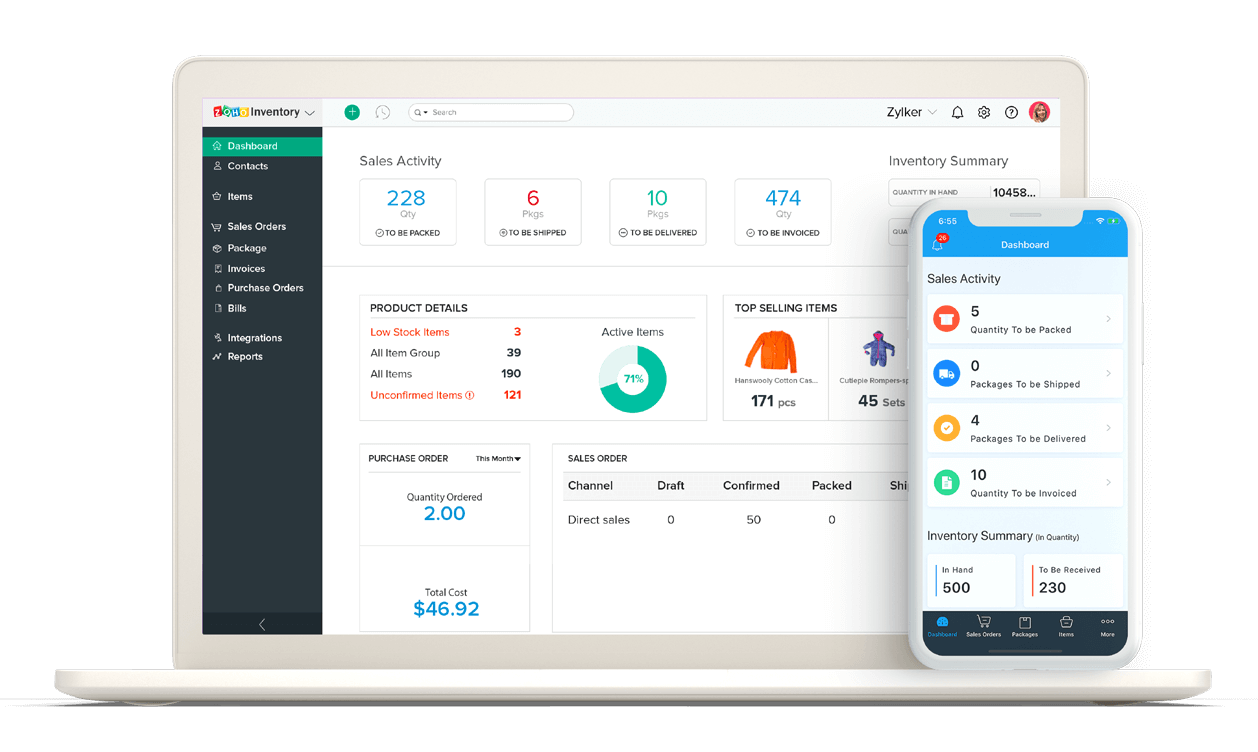Benefits of a Warehouse Management System
Running an inventory involves a lot of interconnected purposes. Today, your warehouse needs to be omnichannel, up-to-date, and handle fulfillment and returns seamlessly. Handling your inventory manually can hamper your productivity, directly impacting your sales. A Warehouse Management System (WMS) is a software solution that can enhance your inventory’s visibility and productivity by automating processes and managing your supply chain operations.
A Warehouse Management System (WMS) comes with potential benefits. Right from reducing errors, to enhancing the speed of the system, WMS plays a crucial role. Today, the scope of WMS extends beyond the conventional way of storing goods in a warehouse to getting the stock into a warehouse and tracing them with absolute accuracy.
Here’s how you can benefit from a WMS.
Make informed decisions
Real-time data makes it possible for you to make more effective and profitable decisions. WMS enables you to see the productivity stats of your warehouse labor, which lets you assess your workflow. Also, you can see your inventory counts and sales trends, enabling you to decide which products to order and when. Never miss out on delivery dates of packages by streamlining your shipping activity in a unified place.
This transition from relying on instincts or guesswork to working based on a predictive model has a direct impact on your organization’s profit.
Enhanced stock traceability
Being able to trace your stock leads to better operational efficiency. Traceability also plays a key role in the event of a sales return or recall, where you need to narrow your search to find all the items in a faulty batch without worrying about checking your whole inventory.
Recent advancements in tracking methods like RFID (Radio Frequency Identification Technology) and barcode scanning have made following the movement of items a lot easier. With a robust warehouse management system in place, you can keep your inventory data organized and track the movement of items throughout your warehouse floor easily, regardless of what tracking method you’re using.
Efficient labor management
Labor is one of the biggest contributors to warehouse costs, and getting your staffing wrong is especially costly. Overstaffing can mean paying workers who aren’t working, and understaffing can leave you scrambling for expensive temp staff or paying overtime to get the work done. Maintaining your labor force becomes a lot easier with an effective warehouse management system, as the software provides crucial data on key functions like packaging, picking, and putaway.
A WMS helps you orchestrate your resources optimally, scheduling tasks and labor based on the flow of orders and stock. The system provides you with up-to-date information on KPIs and helps you forecast your upcoming demand so you can manage your labor in the most efficient way.
Reduced operating costs
A WMS provides you with best use of space and floor plan analysis, an important step towards reducing excess warehouse space. In addition, it can point out the best location to store items based on their demand, movement, and transportation. All of these steps help you reduce your warehouse operating costs.
Positive relations with customers and suppliers
An efficient WMS shows you exactly what inventory items you have at your disposal. This lets you tackle your sales without worrying about backorders which can cause unsatisfying delays in shipping. You can also gear up for seasonal sales in a streamlined manner using periodic trends and reports on particular items. When customers can rely on you to keep their favorite items in stock, they’ll have more trust in your store and be more inclined to buy from you again.
From a supplier’s perspective, reduced wait time at loading bays and appropriate bill payments are vital. A WMS introduces barcode readers and RFIDs into the system, eliminating manual data entry of the stock received. This leads to reduced wait time at loading bays and streamlines supply chain operations efficiently.
Clearly, a warehouse management system helps you gain control over your sales and purchases, leading to lasting relationships with customers and suppliers.





































